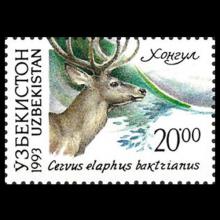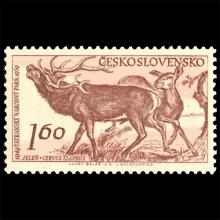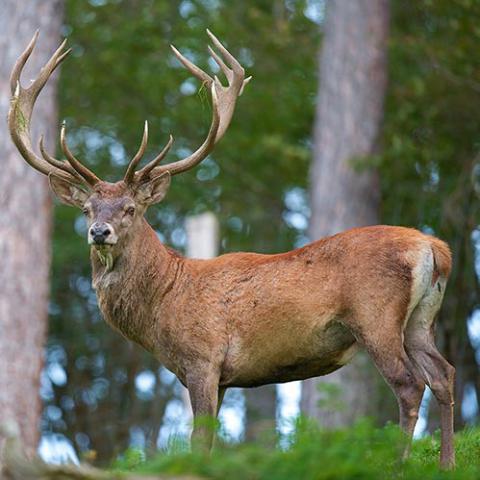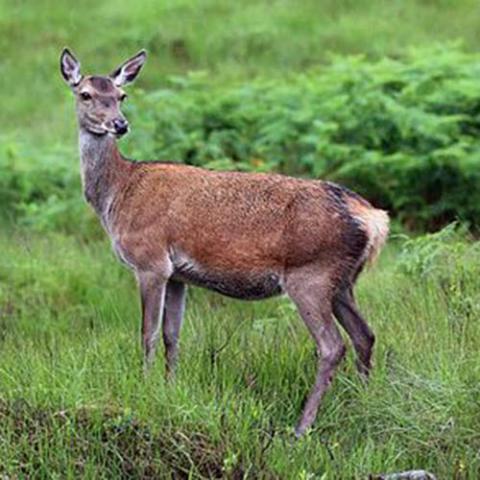NAMES
TAXONOMY
Uzbekistan
Issued:
Stamp:
Cervus elaphus
Czechoslovakia
Issued:
Stamp:
Cervus elaphus
Uzbekistan
Issued:
Stamp:
Cervus elaphus
Czechoslovakia
Issued:
Stamp:
Cervus elaphus
Uzbekistan
Issued:
Stamp:
Cervus elaphus
Czechoslovakia
Issued:
Stamp:
Cervus elaphus
Genus species (Animalia): Cervus elaphus
The red deer (Cervus elaphus) is one of the largest deer species. A male red deer is called a stag or hart, and a female is called a hind. The red deer inhabits most of Europe, the Caucasus Mountains region, Asia Minor, Iran, parts of western Asia, and central Asia. It also inhabits the Atlas Mountains region between Morocco and Tunisia in northwestern Africa, being the only species of deer to inhabit Africa. Red deer have been introduced to other areas, including Australia, New Zealand, the United States, Canada, Peru, Uruguay, Chile, and Argentina. In many parts of the world, the meat (venison) from red deer is used as a food source.
Red deer are ruminants, characterized by a four-chambered stomach. Genetic evidence indicates that the red deer, as traditionally defined, is a species group, rather than a single species, though exactly how many species the group includes remains disputed. The closely related and slightly larger American elk or wapiti, native to North America and eastern parts of Asia, had been regarded as a subspecies of red deer, but recently it has been established as a distinct species. The ancestor of all red deer, including wapiti, probably originated in central Asia and resembled sika deer.
Although at one time red deer were rare in parts of Europe, they were never close to extinction. Reintroduction and conservation efforts, such as in the United Kingdom and Portugal, have resulted in an increase of red deer populations, while other areas, such as North Africa, have continued to show a population decline.
Description
The red deer is the fourth-largest deer species behind moose, elk, and sambar deer. It is a ruminant, eating its food in two stages and having an even number of toes on each hoof, like camels, goats, and cattle. European red deer have a relatively long tail compared to their Asian and North American relatives. Subtle differences in appearance are noted between the various subspecies of red deer, primarily in size and antlers, with the smallest being the Corsican red deer found on the islands of Corsica and Sardinia and the largest being the Caspian red deer (or maral) of Asia Minor and the Caucasus Region to the west of the Caspian Sea.
The deer of central and western Europe vary greatly in size, with some of the largest deer found in the Carpathian Mountains in Central Europe. Western European red deer, historically, grew to large size given ample food supply (including people's crops), and descendants of introduced populations living in New Zealand and Argentina have grown quite large in both body and antler size. Large red deer stags, like the Caspian red deer or those of the Carpathian Mountains, may rival North American elk in size. Female red deer are much smaller than their male counterparts.
Reference: Wikipedia




